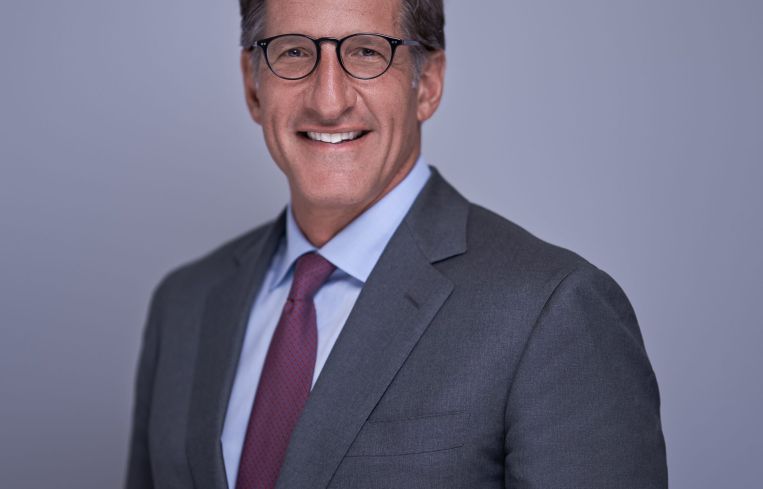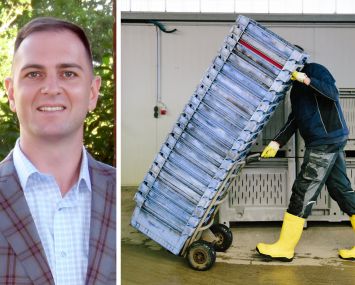Jonathan Roth Talks 3650 REIT’s Preferred Equity Investment Strategy
By Cathy Cunningham October 12, 2021 10:00 am
reprints
As deal activity ramps up across the board for a busy fourth quarter, 3650 REIT is focusing extra attention on the preferred equity space.
The firm recently invested in two multifamily portfolio transactions involving assets worth more than $1.2 billion, and it isn’t stopping there.
Most recently, 3650 provided $93.5 million of preferred equity to a joint venture between David Werner Real Estate and Onyx Partners to recapitalize a 12-asset portfolio in the Southeast comprising more than 3,500 units, also known as the “Southern Portfolio.” The deal recapitalizes existing preferred equity and also provides additional funds to renovate the portfolio properties. David Werner, founder of David Werner Real Estate, described the 3650 team as being “instrumental to getting this extremely complicated multi-party transaction closed.”
The firm also made an $89 million preferred equity investment last month to RREAF Holdings for the acquisition of three multifamily portfolios. Known as the “Transcoastal Portfolio,” its 4,000 residential units are also located across the Southeast U.S.
The transactions are the first two out of the gate from 3650’s preferred equity investment program, which is led by 3650 REIT managing director Michael Fleischer.
Commercial Observer spoke with 3650 REIT co-founder Jonathan Roth to find out how the strategy fits into its overall product offerings and why now is a good time to be a preferred equity investor.
Talk us through the genesis of your preferred equity investment strategy.
We’re always trying to find voids in the marketplace. We’re very good at going from zero to 75, 80 — even 85 percent — in the capital stack with a single loan. We don’t lever that loan, which makes the world a lot easier from every angle, and we have a very robust business doing that. Sometimes it just doesn’t make sense for us to do the whole loan, for example with multifamily, where there’s a lot of inexpensive senior capital that will go from zero to 70 percent at very inexpensive pricing, because borrowers can go to the agencies — Freddie Mac and Fannie Mae — or life companies. But, there’s usually a gap between where the agencies or life company will stop and that gap can be filled with preferred equity. It looks like a debt instrument in terms of it being a fixed amount, there’s a maturity date, there’s a coupon, oftentimes there’s a call in pricing and there’s a pay rate. But it’s really just a different class of equity. From the senior lender perspective, or the agency’s perspective, they don’t have to go through all the craziness with an intercreditor agreement and a lot of senior lenders are prohibited from using subordinate debt.
Someone once told me preferred equity is simply mezzanine debt in a cuter outfit.
[Laughs.] It’s certainly a much simpler outfit. The reality is, it’s a lot easier, because [as a pref equity investor] you’re in the operating agreement. It’s a different form of underwriting for us, but we do believe that it’s a great place to be in the market, because it fills that void in the capital stack. If you’re a developer or owner operator that has long-term-hold objectives, it’s a great way to create value, and then you can just pay off your pref equity and it goes away. Typically there’s no lingering carried interest in the asset.
When did you first launch your pref equity program?
From day one, it’s been embedded in our bridge and event-driven strategy. We recently decided we wanted to allocate more capital specifically for this space because we’re good at it and we’ve garnered a lot of attention in the community. Not everybody is well suited to it. If you’re a lending machine that cranks out loans, you’re not going to be good at preferred equity. If you’re a pure equity player, you may like it but the yields may not be sufficient to get you excited because the equity platform that you raised promised investors a lot higher returns. Even though it sometimes smells and feels like a debt instrument, it’s equity, so we have the flexibility to include it in our bridge and event-driven strategy and we have a lot of capital to deploy via that platform. What you will likely see us do further down the road is create a separate vehicle, specifically geared towards private equity. But for now, it’s as part of our bridge and event-driven strategy.
In terms of transactions, what’s an ideal fit for the preferred equity investments you want to make today?
Ideally, one where there’s no risk [laughs]. We love the multifamily space because there is a real need to fill in the gap between the really inexpensive senior capital that is plentiful, and the true, side-by-side equity. Throughout the pandemic, multifamily is an asset class that has performed very well. If you look at the way rents have escalated over the past 12 months across the country — we’ve seen double-digit rent growth since March of 2020 — we can look backwards and be comfortable at what rents were 12 months ago, or even 24 months ago, and see a great asset class.
There’s also opportunity in the office space for preferred equity, because there are a lot of projects where capital isn’t rushing back in, notwithstanding some of the good headline news. We have a very well-thought-out thesis about office and who’s going to win, who’s going to survive and who’s not. We have an opinion about that — and hopefully we’re right — but you’ll see us do some pref equity in the office sector, as well as the industrial distribution warehouse space and the bio life sciences space.
So many people are vying for multifamily lending and investment opportunities today. How are you sourcing, and competing for, deals?
The deals you’ll see us do, for the most part, are not widely marketed. There’s not going to be a big, glossy book on the opportunity. It’s going to be an off-market transaction instead. Those opportunities still exist, but they’re harder to find. So we like to partner with folks that understand how to find those opportunities and how to capitalize on them. The low-hanging fruit has already been picked so when you look at that orchard at eye level, you’re not going to see it. You have to stretch, and stretching to me means you have to have the vision to be able to repurpose an asset, and make it work in today’s world — which is changing very rapidly. Our job is not only to pick good real estate, but also pick good sponsors that know how to reposition assets. Our job is to provide them with the proper capital, to allow them to execute their business plan. And when they do execute their business plan, then they can refinance us out or sell the asset.
On the Transcoastal and Southern portfolios, what’s exciting to us is one is financed by Freddie, the other is financed by Fannie. And when you come in as preferred equity in transactions like that behind the agencies, the agencies have to pre-approve you, in order for you to ever take over if something goes wrong. That puts us in a very small group of firms that have been pre-approved, and I credit Michael [ Fleischer] for doing this. He’s spent a lot of time getting us to where we are today.
Do you have a maximum or minimum dollar amount in terms of investments?
There’s really no maximum. We’re working on a $1 billion dollar portfolio as we speak, which requires a $100-plus million check from us. The smallest we would do in terms of preferred equity is probably $25 million. Again, we’re not driven by an opportunity having to fix a box so we can do it if we like the opportunity or if it’s with a sponsor that we love. You don’t want to do just one of these transactions with a sponsor.
Both the Transcoastal and Southern portfolios are located in the Southeast. Are there certain markets you’re more interested in transacting in today?
Every market has its own pluses and minuses. At the end of the day, we look at demographics. We are very data-driven, and the good news about today’s world is there’s no shortage of data. We look for good trends, employment growth, economic demand drivers and transportation corridors. As we look at those demand drivers, and the growth and stability of a particular marketplace, our analysis goes deeper and becomes more refined.
We are very sensitive to issues of affordability. So you’ll see us favoring workforce housing or attainable housing. It’s really important that we provide capital to sponsors that want to create housing that’s affordable, because otherwise quality of life diminishes pretty quickly. And so that’s a big focus of ours. At the end of the day, we’re stewards of our own capital and we’re stewards of our investors’ capital, but we also believe that it’s our responsibility to leave the world a slightly better place than what was handed to us and being able to house people in clean, safe environments is important.
How has the pandemic period been for your lending portfolio, generally speaking?
What it did for us as a business is it allowed us to test our systems. We don’t sell servicing rights and we don’t sell loans — we hold them on our balance sheet. So COVID really allowed us to test that because we had conversations with every one of our borrowers, and for every loan that 3650 originated — zero defaults. That [data is] from Morgan Stanley research. We attribute that to how we set up our platform. Going forward, you’re just going to see us continue to build platforms that allow us to capitalize on all of the relationship-building that we have done for the past 35 years [in terms of the experience of each 3650 co-founder] … and then some.
Cathy Cunningham can be reached at cunningham@commercialobserver.com.


